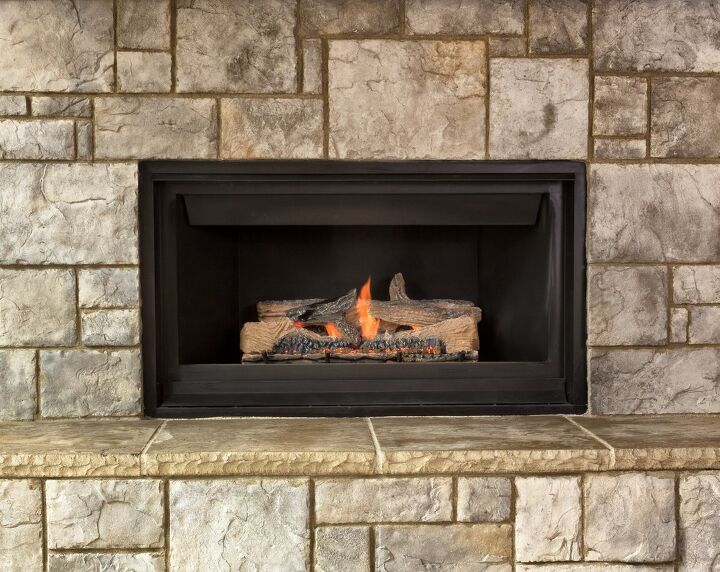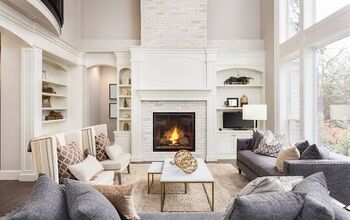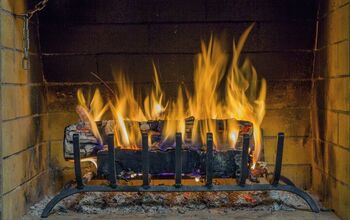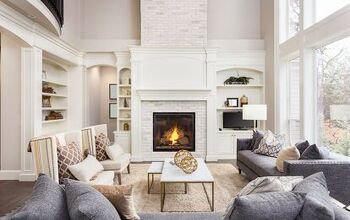What Is A Zero Clearance Fireplace?
Fireplaces are amazing additions to any home. They bring warmth and coziness to living spaces, as well as increase the value of a house. There are a lot of things to take into consideration when deciding on the type of fireplace to install. Ideally, you’ll want the most energy-efficient, attractive, and affordable option on the market. And a zero clearance fireplace might be the answer. So, what is a zero clearance fireplace?
A zero clearance fireplace is a self-contained fireplace that is installable in almost any type of residence, even some mobile homes. These fireboxes don’t require clearance from combustible materials, because of their total insulation. Zero clearance fireplaces are affordable and modern alternatives to traditional masonry fireplaces. They also don’t require a hearth or chimney.
Do You Need Fireplace Installation Services?
Get free, zero-commitment quotes from pro contractors near you.

What is a Zero Clearance Fireplace?
A zero clearance fireplace is a self-contained firebox with a high level of insulation. It is a pre-manufactured fireplace that can fit into a small footprint within your home. Because of its small, self-contained characteristics, it will fit in almost any room in your home.
The primary benefit of a ZC fireplace is its ability to be installed directly next to combustible materials, like framing, wood, walls, and paneling. It doesn’t require a buffer zone like traditional fireplaces, which are greater fire hazards.
Zero clearance fireplaces are recognizable by their black metal appearance. They come in many different shapes and sizes, and their doors can be customizable. You can choose no doors, arched doors, or square doors.
How Do Zero Clearance Fireplaces Work?
A zero clearance fireplace works similarly to a fireplace insert. It is a pre-manufactured metal firebox that is completely self-contained and insulated. This means it can be installed in walls and homes that aren’t designed for a traditional masonry fireplace. Because of its total insulation, it doesn’t require clearance from combustible materials like wood, paneling, framing, and walls. It can also fit well into small spaces.
Besides installing the firebox, you also need to install ventilation pipes. The great thing about ZC fireplaces is they don’t require chimneys or hearths, just a vent through a ceiling or exterior wall. Once the ventilation pipes and firebox are installed, the exterior can be spruced up with masonry, mosaic work, wood molding, or a custom mantel.
Like inserts, ZC fireplaces can fit in places traditional fireplaces can’t. They can go in garages, attics, bathrooms, bedrooms, living rooms, and even sheds. Anywhere you’d like to convert into a cozy living space!
Types of Zero Clearance Fireplaces
Zero clearance fireplaces are affordable and contemporary fireplace options. As opposed to traditional masonry fireplaces, they are much faster and cheaper to install. They also don’t require a hearth or chimney.
While all ZC fireplaces share most things in common, there are a few different styles to choose from. The main difference is the fuel source used. Read on to find out what types are available, and which one is best suited for your home.
Pellet Burning
A pellet burning fireplace is a very economical type of zero clearance fireplace. A thermostat controls these ZC fireplaces, which use wood pellets for their fuel source. Once ignited, they can burn continuously for up to 16 hours before they need replenishing. They burn clean, unlike traditional wood, and are very affordable.
To use a pellet burning fireplace, you have to load the pellets into the hopper, located on either the top or bottom of the fireplace. Then an auger releases the pellets to the burning pot. This burning pot requires regular cleaning.
Gas
Gas fireplaces utilize either propane or natural gas as their fuel source. These ZC fireplaces are really popular options because of how convenient and customizable they are. Sadly, they are fairly expensive units and require stricter ventilation and gas servicing.
Like pellet fireplaces, they are also controlled via the thermostat. So they can be adjusted using a remote control or switch connected to the thermostat. You can adjust heat output, flame size, and even accent lighting. They also don’t require the deep cleaning that wood or pellet fireplaces do.
Wood Burning
Wood burning fireplaces use wood logs as the fuel source. These are the most classic and popular of the zero clearance fireplace types, and for good reason. Wood burning fireplaces offer that traditional fireplace experience, with crackling sounds and burning wood smells. They’re great substitutions for people who want a traditional masonry fireplace, but can’t install a chimney.
While they offer that classic fireplace feeling, they do require diligent cleaning. They also require space to store firewood, and a steady supply of it. This can get a bit costlier or time-consuming than wood pellets. But if you’re set on the smell and crackling sounds of firewood, this type is for you!
Electric
Electric ZC fireplaces are great alternatives to gas fireplaces. If you don’t have a gas line or don’t want to deal with propane servicing, opt for an electric. These are slightly cheaper to purchase and install than gas fireplaces. But they require their own outlet and a circuit that can handle the electrical load.
A major benefit of electric ZC fireplaces is they’re the only type that don’t require ventilation. They also don’t require cleaning, and can be controlled via a remote or switch connected to the thermostat.
Pros and Cons of a Zero Clearance Fireplace
There are so many advantages to installing a zero clearance fireplace. But just like everything else, they come with their drawbacks too. Consider the pros and cons of this fireplace type to help you decide if it’s right for you.
Pros
- Installable in any type of residence, even some mobile homes.
- Low maintenance – no chimney or masonry repairs.
- Simple and quick to install.
- Requires no chimney or hearth.
- The firebox is fairly cheap compared to constructing a traditional masonry fireplace.
- Increases your home’s resale value.
- Far more energy-efficient than traditional masonry fireplaces (up to 70% efficiency rating).
- Customizable appearance – firebox doors, surrounding masonry work, stone, wood, custom mantel, molding, etc.
- Lower fire hazard than traditional fireplaces.
Cons
- Less traditional and authentic looking in appearance.
- Wood burning and pellet burning types require a steady supply of fuel (pellets or logs) and regular cleaning.
- The firebox might look tacky if it is not aesthetically incorporated into the surrounding wall space.
- Still regulated by building codes, and must pass inspection.
- Requires installation of ventilation pipes in the ceiling or an exterior wall.
- Despite the manufacturer dictating 0” clearance from combustible materials, inspectors still look for at least a 2” buffer zone.
Do You Need Fireplace Installation Services?
Get free, zero-commitment quotes from pro contractors near you.

Related Questions
What is the difference between a zero clearance fireplace and insert?
A zero clearance fireplace is usually installed in a newer home or remodel, because it can’t slide into an existing masonry fireplace. ZC fireplaces can also fit into much smaller spaces, while sizing is limited with inserts.
How much does it cost to install a zero clearance fireplace?
The cost to install a zero clearance fireplace (materials and labor) can range from as low as $1,000 to as high as $4,500. The average cost usually comes out to about $2,000 for a standard ZC fireplace. Gas fireplaces tend to run a bit higher, while electric and wood ZC fireplaces tend to be the cheapest.
Related Guides
More by Jessica Vaillancourt



























